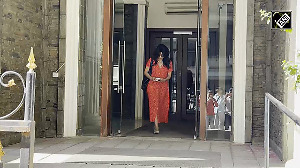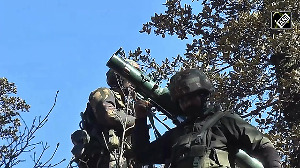The Union government headed by Prime Minister Manmohan Singh and Congress president Sonia Gandhi continues to be clueless on how to deal with the situation arising from the mass outrage of the youth of the country in the wake of the gangrape of a 23-year-old girl in the national capital, notes B Raman.
There are multiple causes for the mass outrage:
- The failure of the police to prevent repeated crimes against women,
- The shockingly inept and brutal manner in which the police dealt with crowds of youth protesting against the incident,
- The inability of the Delhi government headed by Sheila Dikshit to understand the seriousness of the situation and the magnitude of the public anger and respond to it appropriately,
- The lack of unity of action between the Ministry of Home Affairs of the Government of India, which controls the Delhi Police through the Lt Governor.
- The total lack of command and control over the functioning of the police.
- The insensitivity of Home Minister Sushilkumar Shinde who lacks the ability for sophisticated communication and portfolio management.
- A prime minister, who neither rules nor governs nor controls and who is devoid of any warmth in his interactions either in Parliament or with the public,
- A Congress president who exercises vast powers without a proper understanding and appreciation of the feelings and sentiments of the people of this country, specially the youth, and,
- The absence of competent political advisers to the government, who could make good the deficiencies of the political leadership and provide the necessary correctives in dealing with internal crisis situations.
Mechanisms like the Political Affairs Committee of the Cabinet, the Cabinet Committee on Security, the Secretaries' Committee, the Joint Intelligence Committee, the National Security Council Secretariat and the National Security Advisory Board, which were set up over a period of time to provide a continuous flow of crisis-management, strategic-thinking and policy-making inputs to the prime minister and his Cabinet have not been functioning as they used to do under the previous prime ministers.
The de jure power and decision-making vacuum in the Prime Minister's Office and the de facto accumulation of power in circles close to Sonia Gandhi have added to the command and control confusion. During a discussion on the current situation among retired government servants who had served under previous prime ministers, someone posed the questions: Who is taking the key decisions? Where are the key decisions being taken -- in the Congress headquarters or in the PMO? Who is responsible for ensuring the clarity and sophistication of public communications and interactions? Who monitors the developments and suggests action and policy options to the PM?
There were no answers available.
There is a paralysis of governance in New Delhi. Unless the existence of this paralysis is admitted and rectified, things are not likely to improve. The government and the Congress do not seem to be unduly concerned over the public anger and the paralysis because the opposition has not been able to come out with an alternate policy frame-work. The BJP itself is in a state of semi-organisational paralysis.
Narendra Modi, the chief minister of Gujarat, has come out with an alternate style of governance in his state, but his party and its present leadership have not been able to give this alternate style of governance a pan-Indian projection.
This state of affairs is unlikely to be rectified by fresh elections to the Lok Sabha, whether held now or in 2014. The country is in for a long period of misgovernance and administrative paralysis till there is realisation in the Congress and the country over the evils of dynasty rule and over the need to get out of its grip.







